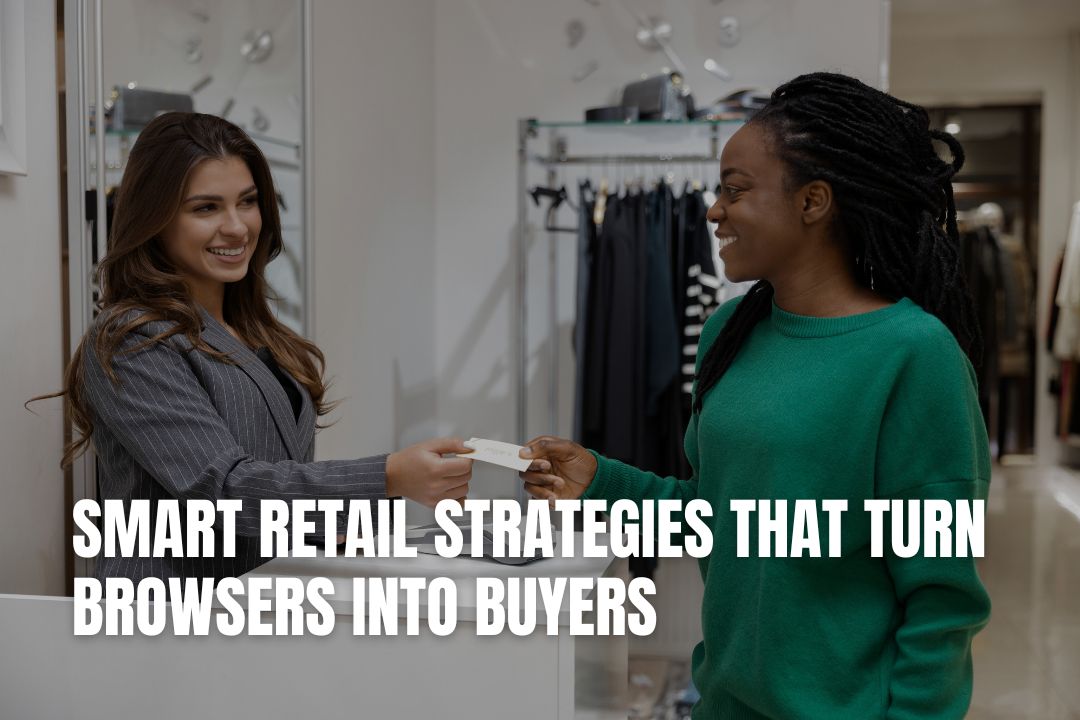
The retail world is no longer about who has the biggest store or the brightest display. The modern shopper is savvy, connected, and selective. They compare prices, read reviews, and expect a personalized experience that feels both effortless and rewarding. For retailers, the challenge is to turn casual browsers into paying customers by understanding how people shop, what motivates them, and how to meet their expectations without overwhelming them. Success lies in creating a shopping journey that blends convenience, personalization, and emotional connection.

Consumers love feeling that they’ve found a deal worth celebrating. One of the strongest motivators for completing a purchase is the perception of value. Many shoppers start their journey looking for promotions before committing to buy, and they often search for coupons that can stretch their budget further. Digital coupon platforms and browser extensions make this process easier, giving customers a reason to move from consideration to checkout. For retailers, offering exclusive online codes or time-sensitive discounts helps drive traffic and boost conversion rates. A smart approach is to blend discounts with loyalty perks, such as rewarding repeat customers or providing early access to upcoming sales. The combination of savings and exclusivity creates a psychological push that transforms browsing into buying.
Personalization is no longer a luxury; it is an expectation. Retailers who treat every shopper the same risk losing attention before a sale can take shape. Smart retail strategies rely on understanding shopping habits, previous purchases, and browsing behavior to craft unique experiences. A customer who buys skincare products regularly might receive recommendations for complementary items like moisturizers or serums. This creates a sense of being understood rather than targeted. The best personalization feels like good customer service - thoughtful, helpful, and intuitive. It encourages customers to stay longer, explore more products, and make confident decisions that lead to repeat business.
Modern retail success is about more than making sales. The most effective brands build experiences that make customers want to return, even when they are not planning to buy. Immersive store layouts, interactive product displays, and well-designed digital storefronts keep engagement levels high. When shoppers enjoy their experience, they are more likely to make an impulse purchase or return when they need something new. Retailers can use storytelling to give products meaning, highlight craftsmanship, or connect with values such as sustainability or community impact. An engaging experience doesn’t just capture attention; it builds trust and emotional loyalty.
Technology plays a defining role in bridging the gap between physical and digital retail. Smart retailers use data-driven insights to understand patterns in behavior and improve decision-making. Artificial intelligence can recommend products based on past purchases, while virtual try-on tools and augmented reality apps help customers visualize how items fit into their lives. For physical stores, integrating mobile apps or digital kiosks creates a sense of continuity between online and offline experiences. Retailers who streamline checkout processes, optimize website performance, and keep inventory updates transparent remove barriers that cause shoppers to abandon carts. A seamless experience gives customers confidence that they are in control, which leads to stronger brand loyalty.

Consumers crave authenticity. They are drawn to brands that reflect their values and tell genuine stories. The way a retailer presents its brand identity has a direct influence on buyer decisions. A brand that shares the story behind its products - how they’re made, who makes them, and why they matter - creates emotional resonance. This connection builds credibility and strengthens relationships with customers who feel aligned with the message. Retail storytelling can happen through product packaging, social media content, or even the design of an in-store space. When done right, it transforms a brand from a simple seller of goods into a trusted companion in a customer’s lifestyle.
Once a customer makes a purchase, the real work begins. Sustaining long-term loyalty requires consistent engagement, quality assurance, and post-purchase support. Loyalty programs that reward repeat business encourage shoppers to return and explore new products. Email marketing campaigns that offer tailored recommendations or early access to collections remind customers that they are valued. Retailers who provide reliable customer service and easy return policies build goodwill that outlasts any single transaction. A loyal customer not only buys again but also becomes a brand advocate, sharing positive experiences and drawing in new buyers through word-of-mouth influence.
Turning browsers into buyers takes more than a polished storefront or a clever advertisement. It involves building an experience that feels rewarding, trustworthy, and personally relevant. Retail success depends on understanding people, meeting their needs with care, and creating an experience that feels as valuable as the products themselves.
Discounts are powerful because they create a perception of high value and urgency. Shoppers often actively look for promotions before buying, and a good deal can be the final push they need to move from consideration to checkout. It makes the purchase feel like a smart, rewarding decision.
It means using customer data to provide recommendations and content that are genuinely helpful and relevant, not just automated. For example, if you frequently buy skincare, you might see suggestions for complementary products. It feels less like being marketed to and more like receiving good, intuitive advice.
Technology helps bridge the gap between your online and physical shops. In-store, you can use digital kiosks or mobile app integrations to provide more product information, check stock, or offer a seamless checkout. This creates a consistent and convenient experience for the modern shopper.
Yes, because modern consumers connect with brands that share their values. A compelling story about how your products are made or the mission behind your brand creates an emotional connection. This builds trust and makes your brand more memorable than competitors who only focus on the transaction.
The most crucial step is to begin building a long-term relationship. You can do this through loyalty programmes, personalised email follow-ups, and excellent customer support. This post-purchase engagement from brands like Beacon Inside encourages repeat business and turns one-time buyers into loyal advocates.